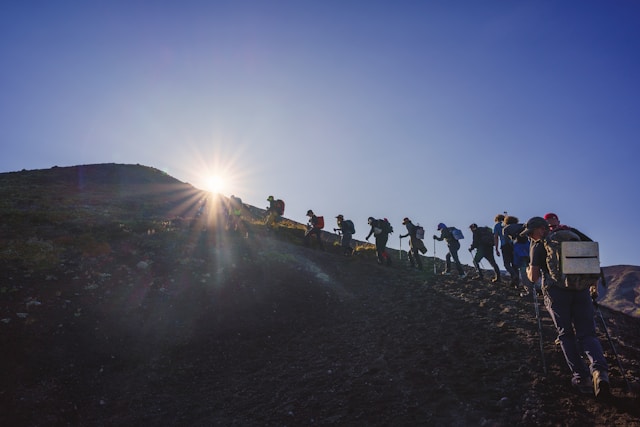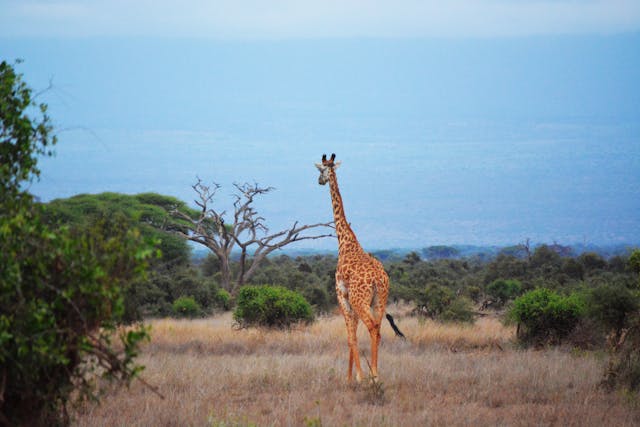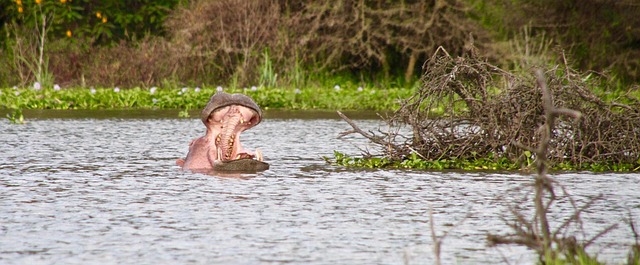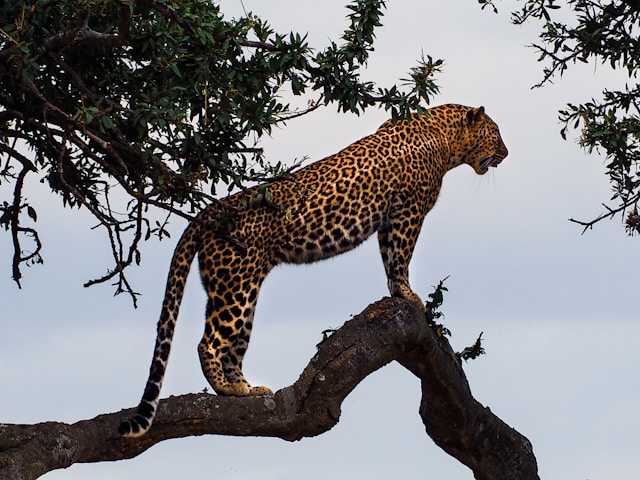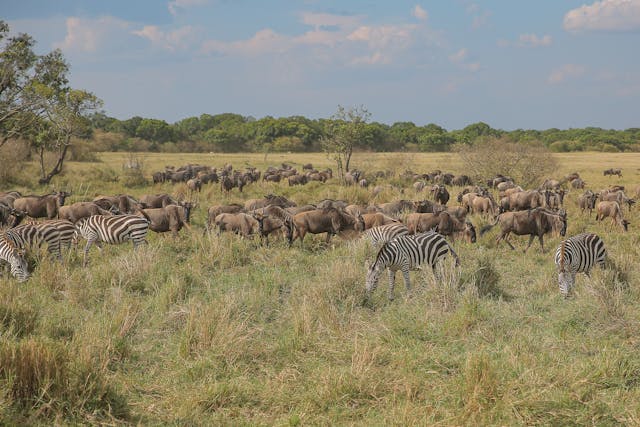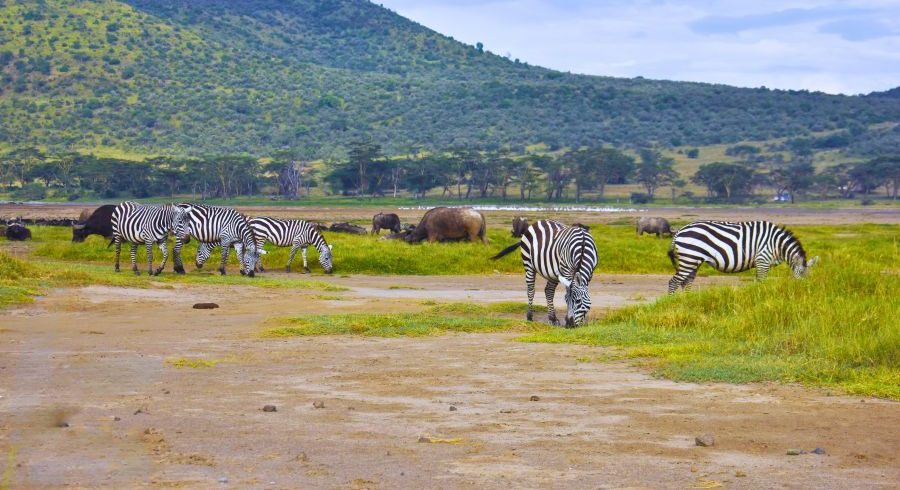Mount Kilimanjaro Climbing 2026 / 2027 / 2028 — Reach the Roof of Africa
Welcome to the ultimate guide and booking hub for Mount Kilimanjaro climbing in 2026, 2027 and 2028. If you’ve ever dreamt of standing atop Uhuru Peak, this is your starting point. We combine expert guides, rigorous acclimatisation strategies, flexible route options, and full safety support to help you summit Kilimanjaro with confidence.
What does it take to climb Mount Kilimanjaro?
A typical Kilimanjaro climbing trip (2026–2028) includes 6–9 day itineraries via routes like Machame, Lemosho, or Northern Circuit, guided by experienced mountaineers, with proper acclimatization, gear, safety protocols, and high summit success strategies.
Why climb now (2026–2028)?
Best seasons: Jan–Mar, June–Oct
Updated 2026–2028 departures
High summit success rates
Customized climbs (group, private)
Strong safety and local guide support
Why Climb Kilimanjaro in 2026 / 2027 / 2028?
Mount Kilimanjaro, Africa’s highest free-standing peak (5,895 m / 19,341 ft), is on many adventurers’ bucket lists. But to truly succeed, you need a well-planned, guided climb. Our Kilimanjaro climbing programs for 2026, 2027, and 2028 combine safety, acclimatization strategies, varied route options, and support to maximize your chances.
-
We operate certified, licensed local guide teams with years of high-altitude experience
-
Multiple route options (Machame, Lemosho, Northern Circuit, Rongai) to suit different fitness and time constraints
-
Small-group or private climbs
-
Up-to-date altitude acclimatization protocols and safety measures
Best Times to Climb
The ideal windows for climbing Kilimanjaro are:
-
January – March (dry / short dry season) — fewer crowds, good weather
-
June – October (main dry season) — more stable weather, high success rates
Avoid heavy rains (March–May) as trails get muddy, visibility is reduced, and summit attempts become riskier. Many operators and route planners plan for optimal window departures. (For example, the 2026 operator schedule showcases Machame, Lemosho, Northern routes during these optimal months.
Kilimanjaro Climbing Routes & Highlights
Each route on Kilimanjaro has its own character, advantages, and challenges. Below is a summary:
| Route | Duration | Highlights / Pros | Considerations |
|---|---|---|---|
| Machame (7 days / 8 days) | 7–8 days | Scenic, high success, popular trail | Steep terrain, can be crowded |
| Lemosho (8–9 days) | 8–9 days | Beautiful, gradual acclimatization, wilderness | Longer cost, logistics |
| Northern Circuit (9–10 days) | 9–10 days | Longest route, least traffic, excellent acclimatization | Requires more time, cost higher |
| Rongai | 6–7 days | Less crowded, approaches from north side | Less scenic variety compared to others |
| Marangu | 5–6 days | Hut-based, easiest hiking terrain | Shorter acclimatization, lower summit success rate |
| Umbwe / Shira / Others | Various | Off-the-beaten paths | More strenuous, high attrition |
(Note: On Wikipedia, you can find a good summary of official Kilimanjaro routes: Machame, Lemosho, Northern Circuit, Marangu, Rongai, Umbwe, etc.) Wikipedia
We’ll provide full route details, daily itinerary, elevation gain, pros/cons, and safety considerations further below.
Sample Itineraries (6–10 Days)
Here are example itineraries (you would link internally to “Full Machame 7-Day Itinerary”, etc.):
7-Day Machame Route (Standard)
-
Day 1 – Arrival in Moshi / Arusha, hotel briefing
-
Day 2 – Trek from Machame Gate to Machame Camp
-
Day 3 – Machame Camp to Shira Camp
-
Day 4 – Shira to Barranco Camp via Lava Tower
-
Day 5 – Barranco to Karanga Camp
-
Day 6 – Karanga to Barafu Camp to Summit (Uhuru Peak) and descend to Mweka Camp
-
Day 7 – Mweka to Mweka Gate and return
8-9 Day Lemosho Route (Preferred for Acclimatization)
-
Day 1 – Arrival & briefing
-
Day 2 – Lemosho Gate to Forest Camp
-
Day 3 – Lemosho to Shira 1 Camp
-
Day 4 – Shira 1 to Shira 2
-
Day 5 – Shira 2 to Barranco
-
Day 6 – Barranco → Karanga → Barafu
-
Day 7 – Summit attempt & descend partially
-
Day 8 – Mweka descent and return
-
Day 9 – Buffer or rest day (if 9-day variant)
9–10 Day Northern Circuit (Ultimate Route)
-
Extra days in wilderness, traverse the north side, less crowd, panoramic views
-
More acclimatization buffer, better summit success
What’s Included & Gear / What’s Not Included
Inclusions:
-
Professional mountain guides, porters, cook, staff
-
National park & conservation fees
-
All meals on the mountain, food, fuel, kitchen, etc.
-
Tents, camp gear, mattresses
-
Transport from Moshi/Arusha to trailhead and return
-
Pre-climb briefing, safety gear, oxygen, first aid
Excluded:
-
International flights to Tanzania
-
Visas, vaccinations, insurance
-
Personal gear / rental (sleeping bag, trekking pole)
-
Tips / gratuities (guides, porters)
-
Hotel nights before or after the climb unless explicitly included
Gear / Packing Checklist:
(You can link to a full “Kilimanjaro gear checklist” page)
-
Layered clothing (base, mid, shell)
-
Warm down jacket
-
Hiking boots, gaiters
-
Headlamp, batteries
-
Gloves, hat, sunglasses
-
Sleeping bag rated for cold
-
Trekking poles
-
Water purification, personal meds
-
Daypack, rain cover
-
Passport, insurance documents
Acclimatization, Altitude & Safety Strategy
One of the keys to a successful summit is how well you manage altitude acclimatization. We build “walk high, sleep low” strategies, extra rest days, and conservative pacing. We carry oxygen and medical kits on each climb. Our guides are trained to monitor altitude sickness and use descent protocols if needed.
Many climbers fail due to too-fast ascent or inadequate acclimatization. Our routes and pace aim to maximize summit success. (See safety details, guide training, success stats in our About section.)
We also offer optional acclimatization day hikes, altitude drills, and rest buffers on longer itineraries.
Summit Success Rates & What Affects It
-
Longer routes (8–10 days) generally have higher success rates
-
Fitness, hydration, pacing, acclimatization, and guide support matter
-
We publish past success statistics (e.g. 85–95% on Machame 8-day, higher on 9–10 day variants)
-
Our operator partners schedule climbs with optimal weather windows
By choosing us, you get the benefit of years of experience, guide training, and safety protocols.
Testimonials
“Climbing Kilimanjaro with Paradise Africa Safaris was a dream come true. The guides were exceptional, safety was top priority, and I felt supported every step of the way.”
— Sarah N., 2024 climber (5-star review)
“We summited on Day 7 and descended safely. The route pacing and altitude strategy were perfect.”
— Michael B., 2023 climber
FAQ
Q: How many days are needed to climb Kilimanjaro?
A: Most climbers choose between 7 and 10 days. Longer routes (8–10 days) allow better acclimatization and higher summit success rates.
Q: Which route is best for Kilimanjaro?
A: The “best” route depends on your time, fitness, and preference. For good acclimatization and fewer crowds, Lemosho 8–9 day or Northern Circuit 9–10 day are often recommended. Machame (7 days) is very popular.
Q: Is Kilimanjaro a technical climb?
A: No, it’s considered a non-technical trek (no ropes needed), but high altitude and stamina demands make it challenging and requires preparation.
Q: What is the best time to climb?
A: January–March and June–October are ideal. Rainy seasons (March–May, Nov–mid-December) increase risk of rain, muddy trails, and lower visibility.
Q: Can beginners climb Kilimanjaro?
A: Yes—many climbers are not mountaineers—but you should have good fitness, train in advance, and choose longer routes for safer ascent.
Q: What is included in the climb package?
A: A typical package includes licensed guides, porters, meals on the mountain, camping equipment, transport to/from trailhead, park fees, safety gear. (It excludes flights, visa, insurance, personal gear.)
Add additional FAQ items as needed (insurance, tipping, cancellation, group vs private, gear rental, etc.).
How to Book & What Happens Next
-
Contact us / Fill inquiry form with preferred dates, route, group size
-
We send you a detailed itinerary & quote
-
Secure booking with deposit
-
We handle permits, logistics, guide allocation, gear
-
Pre-climb briefing, packing list, training tips
-
Climb days, summit, descent, post-climb transfer
(Internal links: “Booking Terms”, “Training Guide”, “Gear Checklist”, “Pre-Climb Advice”)
Our related Tours
-
Mount Meru acclimatization trek
-
Cultural tours (Maasai, Chagga, local villages)
-
Photography safaris before/after climb
-
For official park regulations, permits, and mountain safety guidelines, see Tanzania National Parks (TANAPA) website.
Ready to summit Kilimanjaro in 2026 / 2027 / 2028?
Contact us today for a personalized itinerary, detailed quote, and secure your spot on a mountain-climbing adventure of a lifetime.
Check Available Dates | Chat with a Mountaineering Expert

